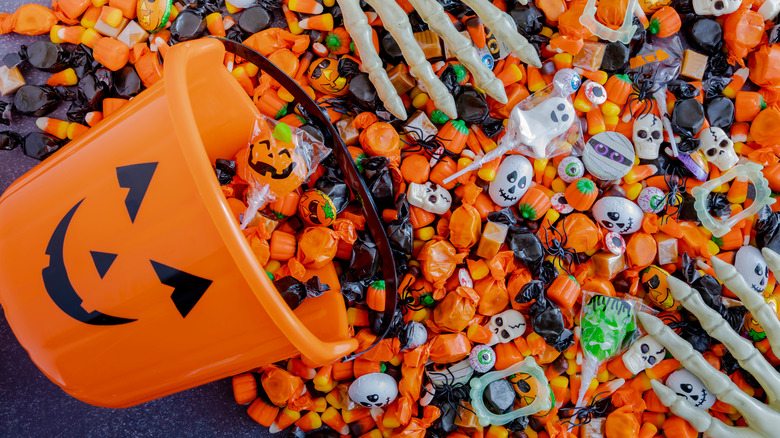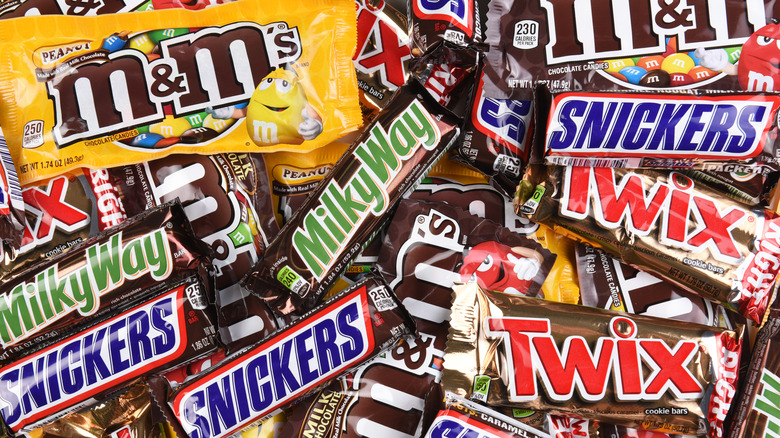Inflation Has Already Come For Halloween Candy
As inflation continues to rise, owning a car has become more expensive, buying fresh produce requires a bigger budget, eating out is a rare luxury, and living, in general, has become a pretty costly affair. Although July brought a brief respite from skyrocketing expenses as the worst seemed to be over, experts tell Time that inflated prices are not going anywhere for at least another year. And as the holiday season inches closer — a time of big spending and even bigger bills — the impact of inflation will be more visible than ever.
Though we're approaching our least Covid-restricted holiday season in two years, more than a third of U.S. adults intend on cutting back their expenses for this year's Christmas, per Digital River. Considering the fact that the price of eggs has jumped from $1.26 to an eye-watering $4.18 this year, it seems like shoppers may be thinking twice before cracking an egg open for Thanksgiving pies, winter eggnog, and Halloween desserts.
While this is all no-doubt concerning for consumers, perhaps nothing will make the reality of inflation more stark than identifying a bag of Halloween candy as the culprit behind a suspiciously high grocery bill. According to The Takeout, inflation has now come for the candy aisle, which could mean a tough October 31 for trick-or-treaters this year.
Costlier candy may not be enough to dampen the spirits of Halloween lovers
The overall price of candy saw a 2% spike from July to August this year, with some candy brands hiking their prices higher than others, reports The Takeout. Hershey's chocolates are 14% costlier than usual, Mars increased the prices of its candies by 7%, and Nestle's prices rose by 9.8% over the last few months. Due to these rising prices, chocolate sales have seen a 1.5% dip since 2021 (via Reuters).
Not all candy makers are responding to inflation by hiking prices, however. Representatives from Hershey's and Mondelez told Reuters that in order to satisfy shoppers' desire for lower prices, the chocolate makers have resorted to shrinkflation, or reducing product volumes while keeping costs level. So while shoppers may find their Cadbury chocolate bars to cost the same as they did in previous years, they may also notice a lighter-weight treat.
It's not all bad news for candy lovers, though: Statistics released by the National Retail Federation indicate that this year's Halloween is expected to be celebrated with the same enthusiasm as it was before the pandemic. Americans are projected to spend a total of $10.6 billion on the holiday, $3.1 billion will be spent on Halloween candy. In fact, 67% of survey respondents said they intend on handing out candy this year, 5% higher than in 2020. Inflation aside, trick-or-treaters may be able to expect their candy bags to be as full as ever this year.

